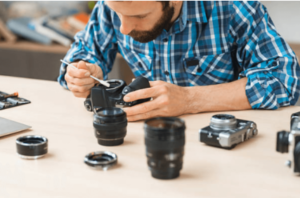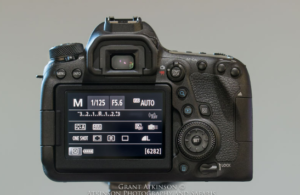Updating your camera firmware
Understanding Camera Firmware
What is Camera Firmware?
Camera firmware is the software that runs your camera’s hardware. It’s the internal programming that controls how your camera processes images, handles various settings, and communicates with other devices.
The Importance of Firmware Updates
Firmware updates are crucial as they often fix bugs, enhance functionality, and improve the overall performance of your camera. They can also introduce new features and ensure compatibility with the latest accessories and lenses.
Signs That You Need to Update Your Camera’s Firmware
Performance Issues
If your camera is experiencing glitches, slow performance, or unexpected errors, it might be time to check for a firmware update. Manufacturers frequently release updates to address known issues and improve stability.
Compatibility Problems
When you purchase new lenses or accessories and they don’t seem to work correctly with your camera, a firmware update might resolve these compatibility issues.
New Features and Enhancements
Manufacturers sometimes add new features or improve existing ones through firmware updates. Keeping your firmware current ensures you’re getting the most out of your camera.
How to Check for Firmware Updates
Manufacturer Websites
The most reliable source for firmware updates is your camera manufacturer’s official website. Brands like Canon, Nikon, Sony, and others provide updates and detailed instructions on their support pages.
Camera Menus and Settings
Some cameras allow you to check for firmware updates directly through the camera’s menu system. Consult your user manual to see if this feature is available on your model.
Online Photography Communities
Photography forums and communities often discuss the latest firmware updates. These can be valuable resources for learning about new updates and any issues users might encounter.
Steps to Update Your Camera’s Firmware
Preparing for the Update
Before updating, make sure your camera’s battery is fully charged. Interrupting the update process can cause serious issues. Also, backup your current settings if possible.
Downloading the Firmware
Visit the manufacturer’s website to download the correct firmware file. Ensure you select the right version for your camera model.
Installing the Firmware
Follow the manufacturer’s instructions carefully. This usually involves copying the firmware file to an SD card, inserting it into your camera, and initiating the update through the camera’s menu.
Best Practices for Firmware Updates
Backup Your Settings and Data
Before you start the update, backup your settings and data. This will help you restore your preferences if anything goes wrong during the update.
Ensure Battery is Fully Charged
A fully charged battery is essential to prevent the camera from shutting down mid-update, which could corrupt the firmware.
Follow Instructions Carefully
Read through the update instructions provided by the manufacturer. Missing a step or misunderstanding the process can lead to problems.
Potential Risks and How to Mitigate Them
Bricking the Camera
A failed firmware update can render your camera inoperable, a situation often referred to as “bricking.” To avoid this, follow all instructions and ensure your camera has sufficient power.
Interrupted Updates
Interruptions during the update process, such as power loss or removing the memory card, can cause serious issues. Always ensure the update process is complete before turning off your camera.
Compatibility Issues
Sometimes, new firmware might introduce compatibility issues with existing gear. Check online forums and reviews before updating to ensure there are no widespread problems reported by other users.
Benefits of Regular Firmware Updates
Enhanced Performance
Firmware updates often include performance improvements, making your camera faster and more reliable.
Access to New Features
Manufacturers may add new features or improve existing ones through firmware updates, providing you with new creative tools and functions.
Improved Compatibility
Regular updates ensure your camera remains compatible with the latest lenses, memory cards, and other accessories.
How Often Should You Update Your Firmware?
Regular Check Schedule
Establish a regular schedule for checking firmware updates. Every few months is a good rule of thumb to ensure you don’t miss important updates.
Update Frequency Based on Usage
If you use your camera frequently or for professional purposes, check for updates more often. Heavy usage can expose you to more issues that firmware updates can fix.
Manufacturer Recommendations
Always consider the recommendations of your camera’s manufacturer regarding firmware updates. They provide the best guidance on when and how to update your camera.
Firmware updates often include improvements and new features that can enhance your photography experience. But how frequently should you update your camera’s firmware? Regular updates ensure your camera functions optimally and takes advantage of the latest advancements.
By learning to balance your camera settings and keeping your firmware up to date, you’ll be well on your way to capturing stunning photos. For more detailed guidance, check out our article on What should I set my camera’s aperture, shutter speed, and ISO to make it balanced?
RELATED POSTS

Understanding Different File Types and Their Impact on Memory Card Storage

How Can You Fix Focus Issues in a Camera Lens That Consistently Produces Soft or Blurry Images?

How Photographers Can Optimize Their Use of Multifunctional Control Dials for Faster Adjustments ?


2 thoughts on “How frequently should you update your camera’s firmware?”